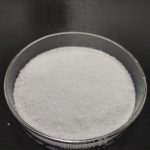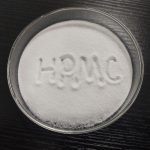
- Startseite
- >>
- Nachrichten
- >>
- Seite 7
Nachrichten Liste
Wir freuen uns, Ihnen die Ergebnisse unserer Arbeit und die Neuigkeiten unseres Unternehmens mitzuteilen und Sie rechtzeitig über die Entwicklungs- und Personaleinstellungs- und Umzugsbedingungen zu informieren.
Hydroxypropyl methylcellulose is easily soluble in cold water, but difficult to dissolve in hot water. But its gelation temperature in hot water is significantly higher than that of methyl cellulose. The dissolution in cold water is also greatly improved compared
Take the required amount of hot water, put it into a container and heat it to above 85°C, and gradually add this product under slow stirring. The cellulose floats on the water at first, but is gradually dispersed to form
In the production of synthetic resins such as polyvinyl chloride (PVC), polyvinylidene chloride and other copolymers, suspension polymerization is most commonly used and it is necessary to stabilize the hydrophobic units suspended in water. As a water-soluble polymer, HPMC product
(1) Whiteness: Although whiteness cannot determine whether HPMC is easy to use, and if a brightener is added in the production process, it will affect its quality. However, most of the good products have good whiteness. (2) Fineness: The fineness
As a non-ionic surface agent, hydroxyethyl cellulose has the following properties in addition to thickening, suspending, binding, flotation, film-forming, dispersing, water retention and providing protective colloids: HEO is soluble in hot or cold water, and does not precipitate at high
Gas phase method: The gas phase method is to add additives or diluents during the reaction process, and the alkali fibers and EO react in the gas phase. The cotton fibers were soaked and activated in 18.5% NaOH solution, then
Alkali cellulose is a natural macromolecule. Each fiber-based ring contains three hydroxyl groups. The most active hydroxyl groups react to form hydroxyethyl cellulose. Soak raw cotton linters or refined pulp in 30% liquid caustic soda, take out and press after
Hydroxyethyl cellulose (HEC), chemical formula (C2H6O2)n, is a white or light yellow, odorless, non-toxic fibrous or powdery solid composed of alkaline cellulose and ethylene oxide (or chlorohydrin) It is prepared by etherification and belongs to non-ionic soluble cellulose ethers. Because
As a printing dye paste, it can be used in pigments, borosilicate dyes, basic dyes, and textile dyes. In addition, it can be used together with thermosetting resins in the corrugation of kapok. It is used for leather surface glue
Adding HPMC to canned food can prevent whitening and deterioration due to the decomposition of citrus glycosides during storage, thereby achieving a fresh-keeping effect. Add to sherbet, ice, etc. in cold fruit products to make the taste better.At the same















